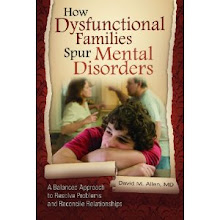For a long time I have been critical about conclusions
drawn from animal experiments which purported to be models for addictive
behavior with drugs in humans. In
particular, I got annoyed hearing over and over about how rats and rhesus
monkeys would press levers to get cocaine, heroin, or methamphetamine compulsively, even until
they died, choosing drugs over even food and water. These experiments were touted incessantly by so-called experts. As I mentioned in a previous post, the head
of the National Institute for Drug Abuse, Dr. Nora Volkov, even had the nerve
to say that rats and humans could have the same phenotype!
My usual response to this was that rats and monkeys do
not know about the damage the drugs might do to them, but that humans do, and that
makes the comparison ridiculous if not completely preposterous. Furthermore, if a monkey experienced the “crash”
that followed stopping cocaine or meth, it would not know that the crash was
due to the drug, only that the drug stopped the crash. And scientists even STILL have had no luck in finding rats who hide bottles of alcohol.
As it turns out, these points, while probably valid, are
only minor considerations in determining the lessons to be learned from these
animal studies. A far bigger issue was that
the experiments were not even accurately or honestly described by those touting them. In an outstanding new book called High Price by African-American
neurospsychologist Carl Hart, a faculty member at Columbia University, the
author points out that descriptions of the environments in which the animals
were kept were completely missing from the descripions, but that environmental factors were
key in determining animal drug use behavior.
 |
| Dr. Carl Hart |
The animals in these experiments were essentially kept in
solitary confinement, as they had throughout most of their lives, and had
nothing else to do but push the lever! If they were instead placed in an enriched environment with alternatie activities available and other
animals with which to socialize, their “drug-seeking” behavior changed drastically.
A series of experiments that the drug warriors don't want you to know
about were conducted in the 1970s, and known as Rat Park. Researchers
allowed two groups of rats to self-administer morphine. They housed the first
group in stark cages, one rat to a cage. They placed the second group in an
“enriched environment,” which offered opportunities to burrow, play, and
copulate. The isolated rats drank 20 times more morphine-laced sugar water than
those enjoying the Rat Park. These results have been reproduced using both
cocaine and amphetamine.
Dr. Hart points out that if you were held in solitary confinement with
just one movie to watch, you might watch it over and over. That would not prove that the movie itself was
addictive! In people, when they have
appealing alternatives, they often do not choose to take drugs in a self-destructive manner.
Add to the mix of misinformation about drug abuse is the unheralded but monumental effect of
racism on both drug use and the prevailing ideas about it. Legal bans on certain drugs (and not others) were
legislated after widespread reporting of highly exaggerated horror stories
about drug use by a despised minority: crack
cocaine by Blacks, marijuana by Blacks and Mexicans, methamphetamines by toothless "poor white trash" in Appalachia, and opium by Chinese
railway workers. No one was immune from
these cultural influences and myths, including the minorities themselves. The Black Caucus in the United States Congress was, originally, solidly
behind the huge and unfair differences in the length of jail sentences for people convicted of using
crack vs. powdered cocaine, the effects of which drugs are physiologically identical.
Some facts: The problems in the
black urban community attributed to crack were already prevalent well before crack
was even introduced. The vast majority
of illegal drug users do not become addicted or even psychologically dependent
on the drug. Among addicts, half are
employed full time. Violent convicts in
jails are less likely to abuse drugs than other prisoners. The vast majority of homicides do not
involved drug use, and alcohol is probably the worst offender among those that
do. Dealing crack is only about as
profitable as working at McDonalds for low level dealers. Few people who abuse drugs take only one
drug, yet there are very few studies of the effects of combinations of drugs. Self reports from addicts who are asked about
their cravings for the drugs do not predict whether or not an addict in recovery
will relapse.
Adderall and Methamphetamine are nearly identical molecules with
identical effects, yet drug manufacturers go out of their way to say that those
children treated with stimulants for “ADHD” are no more likely to go on to
abuse drugs than anyone else. Of course,
since their drugs are already being legally provided to them by physicians, they have no need to
obtain them from illegal sources, which is one of the measures the experts use
to measure drug abuse!
This kind of circular reasoning in the literature abounds. In a series of experiments with rhesus
monkeys, Dr. Hart reports, “…researchers found that the animals’ choice to use
cocaine is reduced to the size of the food reward they are offered as an
alternative.” People are now using this data to claim that junk food is as addictive as cocaine, when initially
cocaine was claimed to be “…especially addictive because animals preferred it to food when hungry.” (p.93).
The book by Dr. Hart is especially eye opening because it combines
discussions of this sort of pseudoscience with the author’s explorations
about his own personal story. As an
African-American having grown up in an inner city in which many of his friends
and relatives did poorly and got into drugs and crime, he asks himself why he
not only escaped this but became an Ivy League professor and an expert. The experiences of this black man in America
shines a bright light on the real causes of self destructive behavior. It is not drugs.
The following graphic is not discussed in the book, but, with what we know about the havoc that a felony conviction and hanging out with convicts for months or years can create in the lives of young men, it is clear that far more harm is inflicted on drug users by the laws against drug use than by the drugs themselves.
The following graphic is not discussed in the book, but, with what we know about the havoc that a felony conviction and hanging out with convicts for months or years can create in the lives of young men, it is clear that far more harm is inflicted on drug users by the laws against drug use than by the drugs themselves.
By the way, do you know how to abuse drugs? You hold them in your hand and scream at them, “You worthless pile of
sh*t! You call that a buzz?? You suck!” You then throw them to the ground
and stomp on them.
Yeah, it’s the self that’s being abused by addicts, not the drugs.
You owe it yourself to read this highly engrossing and informative book.










Great post, thanks for reviewing (I thought it would be more about psychotropic drugs but it was very good nonetheless [it reminds I read somewhere {maybe your blog} that heroin is the least physically damaging drug in the world, it's only stigmatized because it's often injected and it's so *psychologically* addicting *because* there are no negative physical side effects like a hangover]).
ReplyDeleteNo need to substitute Adderall for meth...you can obtain the latter by Rx for treatment of either ADHD or obesity: http://www.drugs.com/pro/desoxyn.html
ReplyDeleteYeeeeeah! cos them monkey's love the drugs man even more than the rat's....
ReplyDeleteEspecially in addiction the whole disease myth, let's people feel less guilty about being douches, nice bonus it was the drug's, porn, booze man not me...
get that all the time with my ex-alcoholics group, it was not you, you were sick. Sure sure